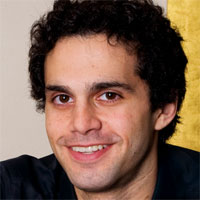A concert consisting of the works of a single composer could leave you with a feeling of incompleteness, unless the compositions win you over with their beauty and profundity, which was certainly the case in this concert. The charismatic Mr. Nasseri captured the audience’s attention by talking confidently and with an excellent sense of humor about the music he was to perform.
The beginning of the Sonata in G Major, Op. 31, No. 1 (1801-02), is extremely syncopated which Nasseri’s rhythmic precision made eminently clear. In this sonata, Beethoven stayed away from the Haydn-like playfulness and the Mozartean elegance of an earlier age with the tonal and dramatic range of this work. In the slow movement, Nasseri performed its melodies with such fluidity that reminds on of Chopin.
The lesser known Eleven Bagatelles, Op. 119 (1820-22), offered a mixture of dance-like and melodic miniature pieces all nicely performed by Nasseri, and it served to prepare the audience for the much anticipated major work of the evening.
The concert ended with Sonata No. 21 in C major, Op. 53 “Waldstein” (1804) that belongs to Beethoven’s virtuosic middle period. The very first opening “C” – played two octaves below middle C – of this sonata although designated pianissimo, it is the catalyst that creates the relentless pulse of this movement. Nasseri realized these intentions beautifully and provided a wonderful contrast to the driving intensity with his rendition continuing to explore the developing theme with its technical demands.
Beethoven chose to substitute a brief prelude as a dramatic transition into the final Rondo. Nasseri performed with large dramatic gestures in the final moments of this superb work and ended the sonata as it began, with a display of joyful bravura that deserved the standing ovation he received.

